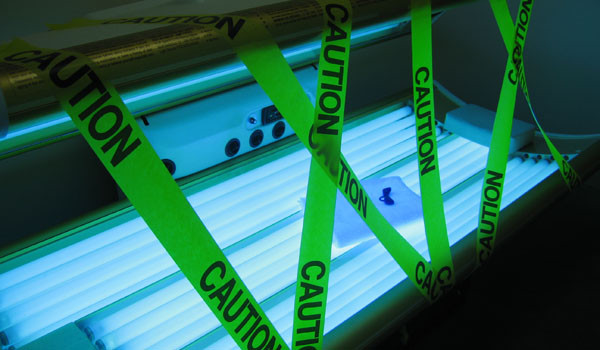After a long and snow-filled winter, many of us are dreaming of sun and the beach as spring break nears and we take a look in the mirror at our lack of color. Before you head off to that tanning salon to get your “base” on prior to heading off to your tropical destination, it is important to consider some facts and dangers about tanning beds and overexposure to the sun in general.
I have to admit that I am guilty of looking for a little tan before Sweethearts or heading out on Spring Break. However, the facts I have recently encountered will curb my enthusiasm for adding some quick color at the expense of risking my personal health. Even the Webster definition of tanning provides two descriptions and they are eerily similar: Tanning n. 1. The art or process of making leather, 2.The browning of skin by the exposure to sun.
Both poolside tanning and tanning beds expose the skin to harmful ultraviolet (UV) radiation. Except the UV radiation levels in indoor tanning devices can be up to 15 times stronger than normal sunlight. Some studies have suggested this triples the chance of getting skin. How many people put on sunscreen before they close the lid on the tanning machine? UV rays have been classified by the International Agency for Research on Cancer as a group one carcinogen, meaning that they’re in the same category as tobacco, mustard gas and plutonium. Basal cell carcinoma is the most common form of skin cancer worldwide, followed by Melanoma. Although both are very harmful, Melanoma is much more fatal than Basal cell carcinoma. Melanoma is completely curable when detected early but can be fatal if allowed to progress and spread.
The dangers of tanning beds are so significant that there has been a recent effort suggesting that legislation be approved requiring parental permission for anyone under the age of 18 to use a tanning bed. We all know that it feels and looks good to get a little color after a dreary and long snow-filled winter. However, as you look to get a bit of color before flying to Mexico or the Caribbean you may want to consider a nice spray tan or just using good common sense and a bit of sunscreen on the beach to slowly add some color during your vacation.
4 Myths about Tanning Dangers
- “Skin cancer is easily curable.” Not necessarily. Melanoma can be fatal if not detected early. Pre-cancerous or cancerous cells must be removed, usually by cutting out the affected tissue, which can leave scars. Who wants a divot in their nose?
- “Your body needs sun to stay healthy.” Sunlight is necessary for your body to synthesize Vitamin D, but it takes only 5-15 minutes of sun, two to three times a week. That’s it! Get outside and take a walk, but don’t bask for hours!
- “Moderate tanning is okay.” Cancer is a risk even if you only spend a little bit of time bronzing. Just one bad sunburn can have long lasting and damaging effects.
- “Tanning beds are safer than the sun.” Tanning beds usually emit mostly UVA rays that are less likely to cause sunburns. However, those UVA rays are believed to cause deeper skin damage, including premature aging and melanoma, not to mention an estimated 700 emergency room visits per year are related to tanning beds use. In addition, many tanning beds harbor fungus and can create persistent skin rashes.
































